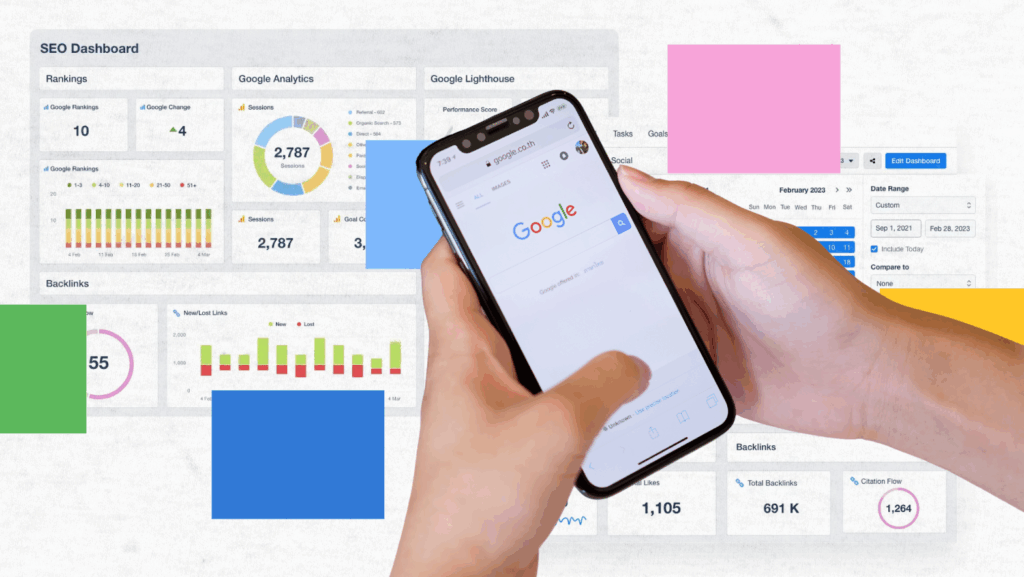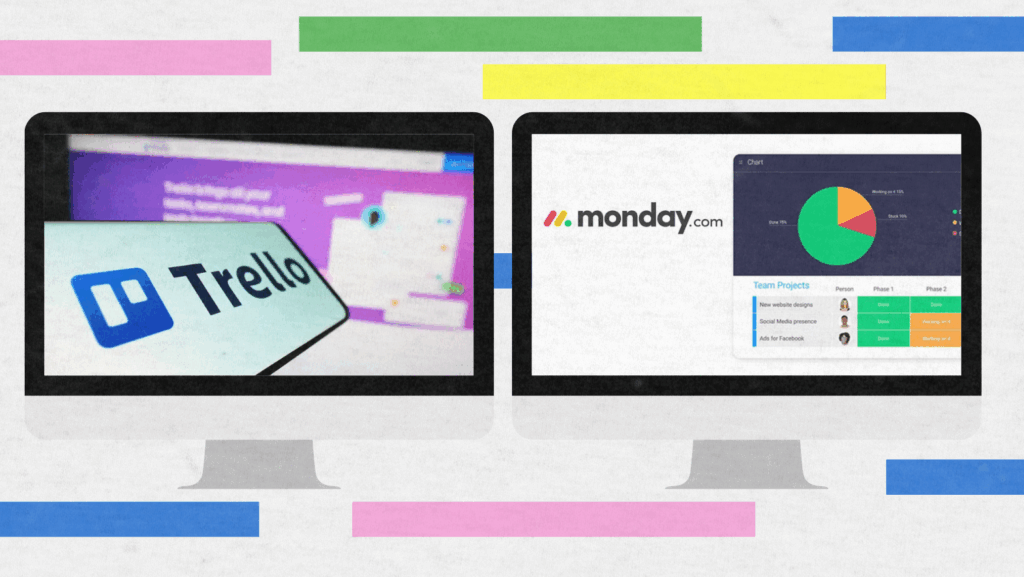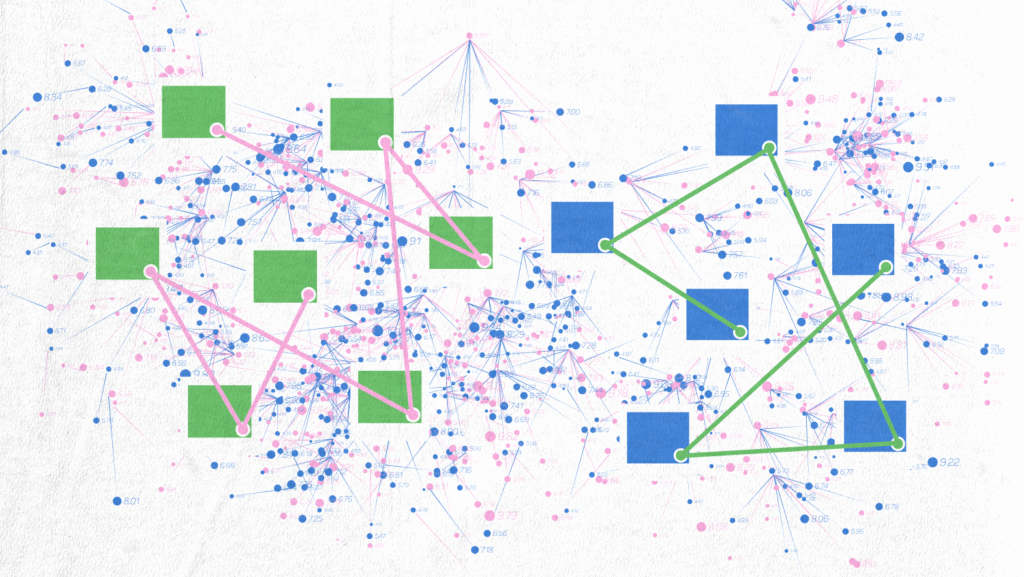In September 2025, Google made a low-key decision to get rid of the &num=100 search parameter – and the SEO community felt the change instantly. This little but mighty option was for many years the tool with which SEO specialists and marketers could get the top 100 search results from a single Google Search query. That’s how almost every rank tracking tool on the market was fueled, thus experts could collect ranking data, track keyword positions, and perform SEO competitor analysis for multiple projects at the same time.
The way rank tracking works has essentially changed with the latest update, where only 10 results per page can be viewed. The update of this nature not only reduces access to the data, but it also changes the way we measure performance, check the target keywords, and report the results to others.
Fluctuations in Google Search Console and Google Analytics were noticed by many teams. They saw drops in tracked keywords and slight shifts in impressions. The removal of num=100 is not only signaling the end of a familiar way but also a new stage of SEO strategy that focuses on smarter insights, cleaner ranking data, and getting quality instead of quantity.
What Was the &num=100 Parameter and Why SEOs Loved It
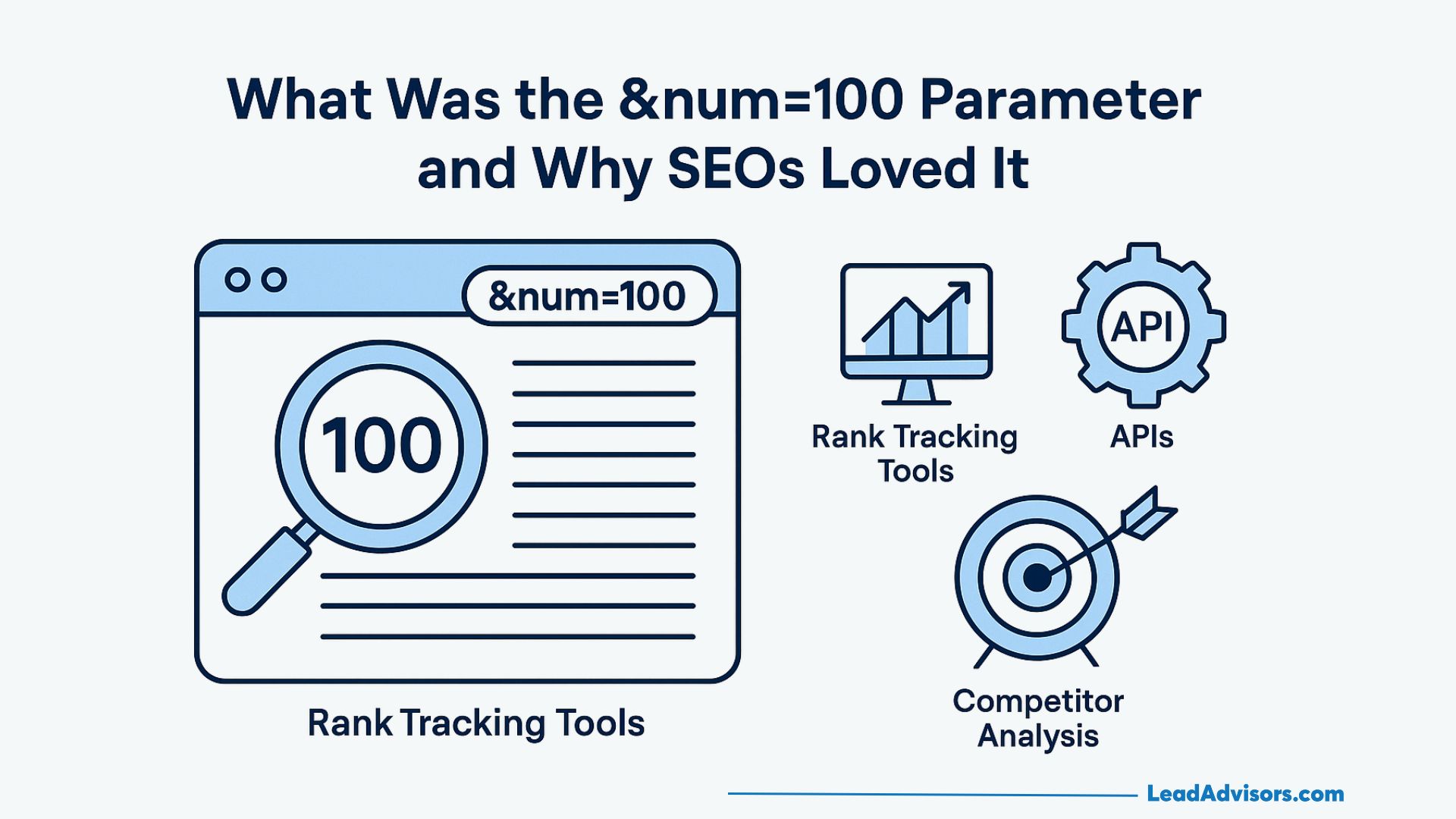
Working silently in the background, the &num=100 parameter was like a secret key that unlocked a world of possibilities for SEO professionals. Essentially, it was a way to get top 100 search results in one go – a tool that was absolutely indispensable for anyone involved in rank tracking or large-scale analysis of search engine results.
Almost all major rank tracking tools like AccuRanker, SE Ranking, and Nightwatch were able to fetch ranking data because of this feature. In addition, APIs such as DataForSEO and SerpAPI used it as their primary source to quickly deliver detailed SERP features and positions of target keywords across different search engines.
SEOs through the &num=100 parameter were given the power to see the full search engine results pages, thus making competitor analysis and keyword research not only fast but also accurate. It gave agencies and SEO tools the ability to spot trends, measure visibility, and follow keyword performance over time. To quite a few professionals, it was the best way to do efficient and accurate rank tracking when Google retired it in 2025.
The Removal: What Changed in September 2025
By mid-September 2025, Google quietly eliminated the &num=100 parameter – and that single move reshaped how rank tracking works. Without it, rank trackers and APIs could no longer pull all 100 search results at once, forcing tools to paginate manually through search engine results pages. Each keyword query now requires up to 10 times more requests, dramatically increasing data collection costs and complexity for every rank tracking tool.
The impact was immediate. API costs soared as rank tracking platforms had to adapt. Tools like AccuRanker, SE Ranking, and Nightwatch began scaling back their depth, with AccuRanker limiting tracking to the top 20 results. Meanwhile, SEO tools such as SEO Maven (powered by DataForSEO) turned to flat-rate models to maintain affordability for users tracking thousands of keywords across multiple search engines.
According to Search Engine Land, 77% of websites experienced keyword visibility loss, while impressions dropped by 87%. SEOs on Reddit noted that rank tracking software had become slower and more expensive. Agencies like Reflect Digital and Platform81 speculated that this change was deliberate – a way for Google to reduce scraping, protect infrastructure, and push users toward verified data through Google Search Console and Google Analytics.
This shift marked a major turning point in search engine transparency. It didn’t just limit data; it forced SEO professionals to rethink how they gather ranking data, analyze SERP features, and measure search performance in an increasingly AI-driven search landscape.
Why Google Made This Change (and What It’s Really About)
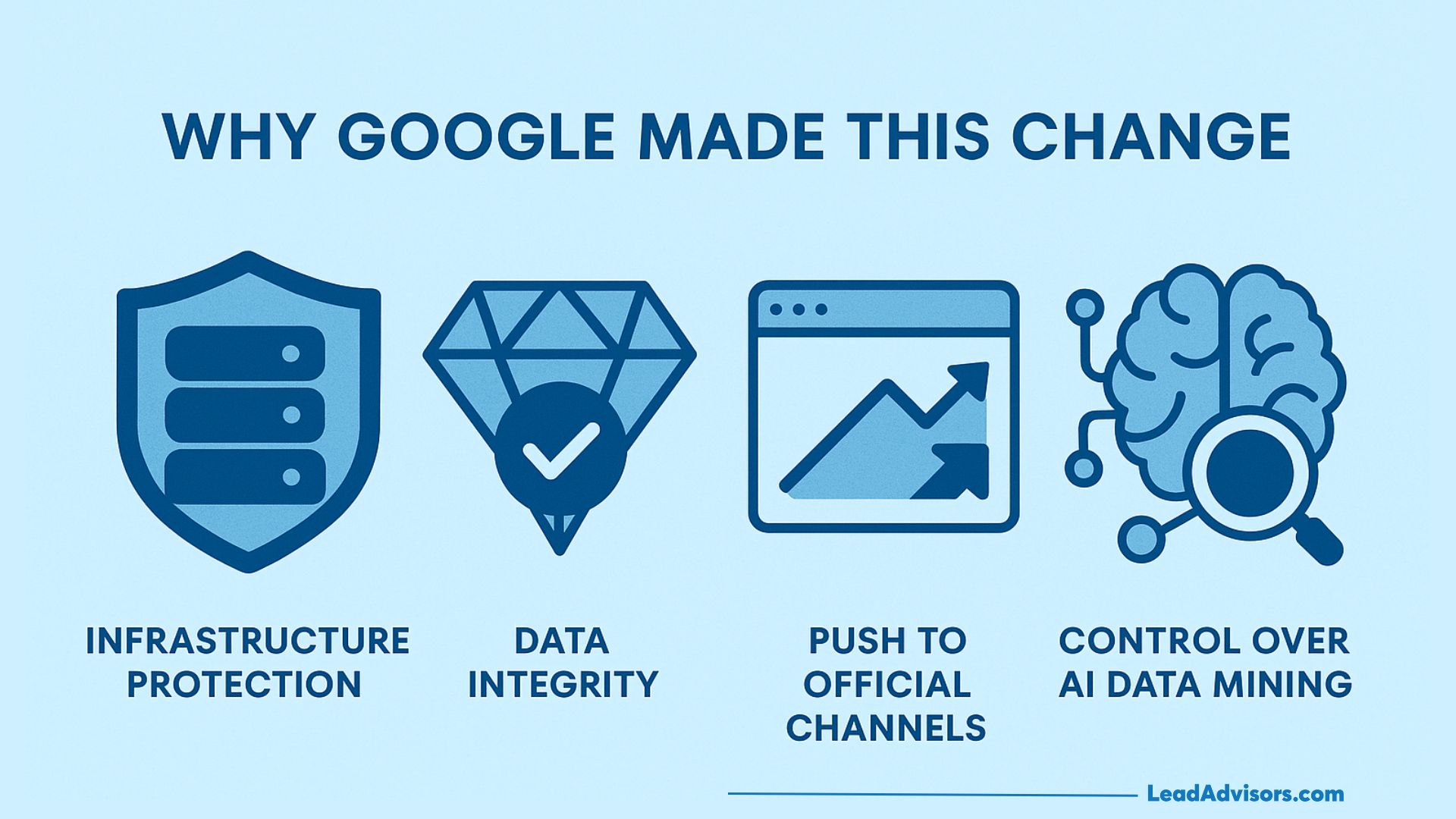
Google has remained officially silent about the removal of the &num=100 parameter, but seasoned SEO professionals can connect the dots. The decision reflects a broader shift toward data control, infrastructure protection, and promoting the use of verified data sources such as Google Search Console and Google Analytics.
- Infrastructure protection: According to Veronika Höller, Google servers were facing a “10x crawl load” from automated rank tracking tools scraping large sets of search engine results. Disabling the parameter eased the strain on Google’s systems, ensuring more stable performance for real users.
- Data integrity: Google also wanted to reduce false impressions and inflated activity caused by bots. Limiting bulk queries improves the reliability of ranking data and helps maintain accurate rank tracking, allowing results to better reflect genuine human behavior.
- Push to official channels: The move pushes the industry toward official APIs, Search Console, and Bing Webmaster Tools instead of third-party scrapers. For SEO agencies, this means greater reliance on verified metrics and a suite of SEO tools that comply with platform standards.
- Control over AI data mining: As detailed in Medium’s “The Internet Disappeared,” Google’s change also helps curb AI data scraping. With the rise of LLM-based SEO tools and AI-assisted rank tracking software, limiting SERP access prevents massive data harvesting for model training.
Experts agree this wasn’t accidental. Ryan Jones summarized it best: “Google is protecting the index – the prize.” Meanwhile, Brodie Clark called it part of “The Great Decoupling,” suggesting Google aimed to remove bot-driven impressions that distorted search performance data.
Ultimately, this update reinforces Google’s message: rely on official tools, protect data integrity, and focus your SEO strategy on metrics that reflect real user engagement – not automated visibility reports.
The Real-World Impact on Rank Tracking
![]()
The removal of the &num=100 parameter didn’t just change how SEOs collect data – it redefined the foundation of rank tracking itself. With fewer results per page, less access to deep data, and higher operational costs, the update has affected reporting accuracy, tool pricing, and agency communication across the entire industry.
a. Data Accuracy and Reporting Distortions
Right after the change, SEOs began noticing anomalies in ranking data. Average position values improved artificially because results beyond page one were no longer included in datasets. Impressions plummeted, but clicks remained steady – creating what many Reddit users called a “false performance dip.”
In Google Search Console, data inconsistencies appeared around mid-September 2025, forming a clear break in historical ranking data. Comparing metrics from before and after that date led to skewed insights. For many SEO tools, long-tail tracked keywords became harder to measure accurately. The result? Reports looked better on paper, but the data didn’t reflect real search performance or organic traffic trends.
b. Economic Impact on SEO Tools
The cost of running any rank tracking tool rose sharply overnight. Without bulk result access, APIs must now make up to 10× more requests per keyword to collect complete datasets. This caused rank tracker pricing to skyrocket, increasing average costs from roughly $1.05 to between $8 and $12 per 1,000 keywords tracked.
To adapt, SEO tools responded differently:
- AccuRanker limited tracking depth to the top 20 results.
- SE Ranking and Nightwatch made users wait longer for updated data.
- SEO Maven (using DataForSEO) switched to a flat-rate fee to keep prices from spiraling.
These adjustments revealed how heavily the industry relied on Google’s once-open structure. The rank tracking software market now emphasizes efficiency and transparency over scale, forcing users to balance keyword performance depth with operational expense.
c. Agency and Client Communication Challenges
For agencies, the challenge wasn’t just technical – it was educational. Clients saw steep declines in impressions and assumed rankings were lost. In truth, their site ranking and organic traffic were largely unchanged; it was the rank tracking tool data that shifted.
This pushed agencies to evolve their reporting strategies. Instead of fixating on raw position data, they began highlighting clicks, CTR, and conversion-driven SEO metrics. Reports now emphasize search engine results pages visibility and SERP features such as snippets or map packs – areas that truly influence user engagement.
Ultimately, the num=100 removal served as a wake-up call. Chasing every position no longer defines success; understanding how search engine rankings convert into measurable outcomes does. The industry is moving from counting results to analyzing impact – a sign of progress toward a more meaningful and data-informed era of SEO.
What SEOs Should Focus on Now
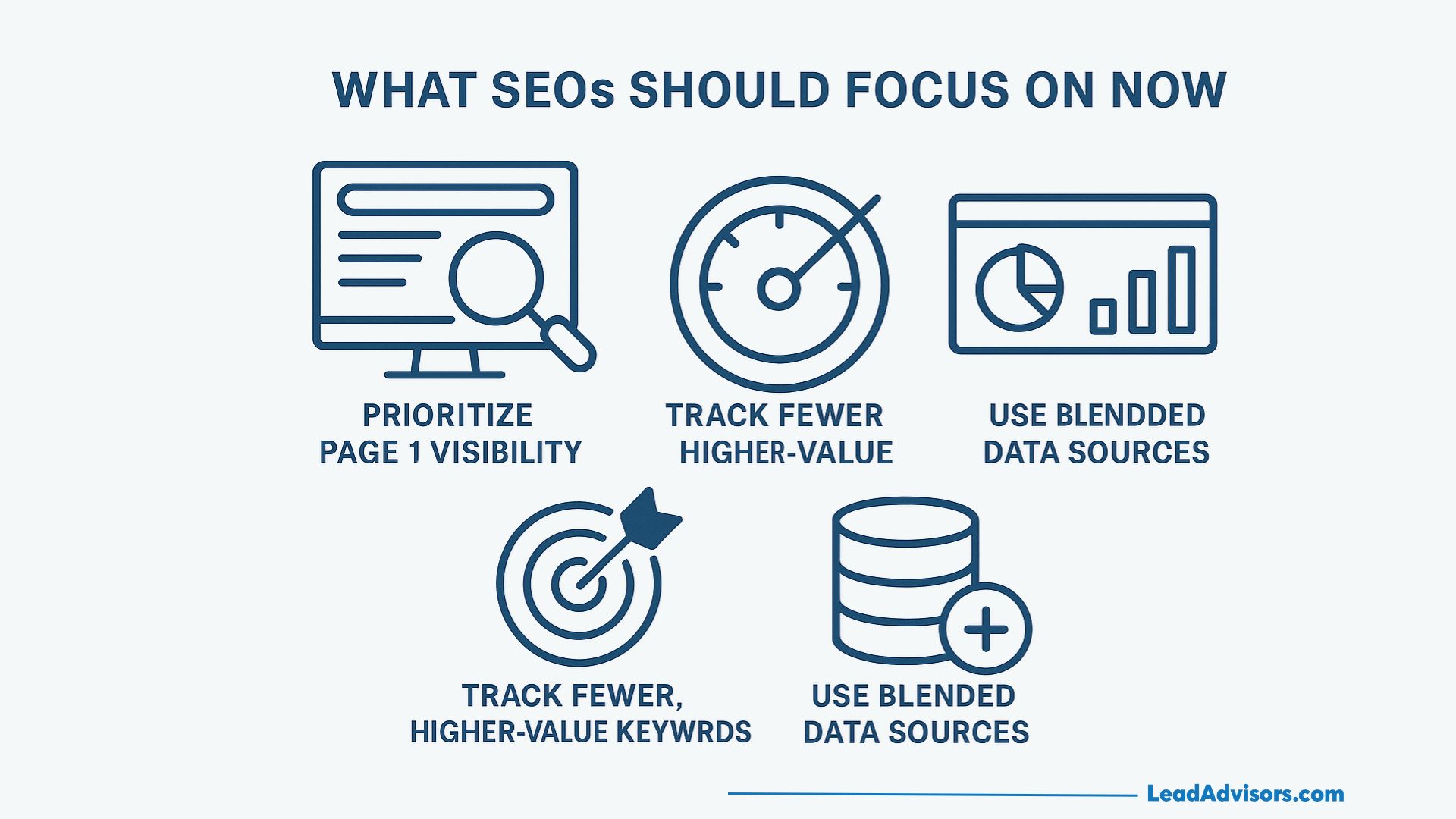
The num=100 update forced SEOs to reassess how they collect, interpret, and report ranking data. Instead of tracking hundreds of results that few users ever see, professionals now need to concentrate on metrics that represent real visibility and business impact. This moment is less about limitation and more about clarity – an opportunity to refine how rank tracking connects to performance and ROI.
1. Prioritize Page 1 Visibility
The majority of users never go past the first page of search results, so Page 1 visibility has never mattered more. Whether you use an SEO rank tracker or an SEO rank tracking tool, focus on target keywords that can realistically reach the top 10. Optimizing for these high-value positions improves organic traffic, engagement, and conversions far more effectively than chasing dozens of low-traffic terms buried beyond page two.
2. Shift Reporting Metrics
Instead of obsessing over total impressions or average position, emphasize clicks, CTR, and conversion performance. Use Google Search Console and Google Analytics together to understand how rankings translate into user actions. This balanced reporting approach ensures SEO efforts reflect actual customer behavior – not just surface-level ranking shifts.
3. Track Fewer, Higher-Value Keywords
Smarter rank tracking tools allow you to focus on fewer but more impactful keywords tracked. Identify the search terms driving leads, sales, or meaningful engagement, and allocate tracking budgets toward those. Monitoring 50 strong performers is far more valuable than 500 that deliver no traffic. Quality tracked keywords create cleaner dashboards and easier reporting for teams managing multiple campaigns.
4. Recalibrate Your Dashboards
Treat September 2025 as a formal data break point. Adjust your rank tracking dashboards and reporting templates to distinguish pre- and post-update results. Many SEO tools now include filters for this, but it’s best practice to manually segment data as well. Comparing older ranking data with new, limited-depth reports without noting the change can easily distort insights and KPIs.
5. Use Blended Data Sources
Accuracy now depends on blending multiple data sets. Combine verified results from Google Search Console with trend data from your preferred rank tracking software for a more complete view. Supplement this with manual keyword monitoring of key search terms and local SEO checks when relevant.
By consolidating these insights, SEOs can maintain accurate rank tracking while adapting to the new data limits. The future belongs to those who focus on search performance, interpret ranking data strategically, and align their tracking methods with genuine user behavior.
The Future of Rank Tracking in the AI Search Era
As AI Overviews and generative SERPs reshape how users interact with search engine results pages, traditional ranking metrics are becoming less reliable. In this evolving landscape, rank tracking must adapt from measuring static positions to modeling overall visibility and influence across multiple experiences within Google Search and other platforms.
From Position Data to Visibility Modeling
Old-school position tracking focused solely on where a URL ranked, but that no longer tells the full story. With AI summaries, snippets, and product carousels dominating the SERP, it’s now about how often your content is visible – not just where it sits. This shift toward visibility modeling gives SEO professionals and brands a clearer picture of actual exposure across search engine results.
Future-ready rank tracking tools will integrate keyword analysis, search volume data, and SERP features performance into a single, data-rich interface. Instead of static rankings, SEOs will measure visibility across devices, queries, and AI-generated answers – a holistic way to assess search performance.
Emerging Rank Tracking Features
Next-generation rank tracking software will emphasize insights that go beyond blue links:
- SERP feature tracking to monitor featured snippets, map packs, FAQs, and AI overviews.
- Share-of-voice metrics that replace rank depth with measurable visibility across search engines.
- Unified dashboards that merge data from Google Search Console, social analytics, and SEO tools like Advanced Web Ranking or Nozzle.
- Multilingual rank tracking and local SEO search results monitoring to understand visibility across different regions and languages.
These innovations will make the tracking tool more dynamic, connecting real keyword performance to outcomes like website traffic and conversions.
AI-Assisted Rank Analysis
The next leap forward will come from AI-assisted rank analysis. Modern rank trackers will use machine learning to forecast how updates, content changes, or new competitors will affect keyword positions. Predictive insights will help teams start tracking emerging opportunities before they peak, integrating tools like Google Data Studio for visualization.
Ultimately, the future of rank tracking lies in adaptability – understanding not just your place in the SERP, but your role in the entire user journey. As major search engines evolve, SEOs who embrace visibility modeling and AI-driven insights will stay ahead, focusing less on individual ranks and more on measurable influence across all of search.
How to Choose or Reassess Your Rank Tracker in 2025
![]()
After Google’s num=100 update, choosing the right rank tracking tool isn’t just about brand recognition – it’s about precision, data transparency, and cost efficiency. With most rank tracking software now relying on paginated queries, SEOs need to evaluate tools based on how effectively they handle ranking data, update speed, and integration with official sources like Google Search Console.
Best for Data Depth: Ahrefs, Semrush
If your priority is extensive ranking data and deep keyword research, Ahrefs and Semrush remain the top choices. These SEO tools excel in tracking keyword ranking across multiple search engines, analyzing backlinks, and offering comprehensive search volume data. Their in-depth crawlers and advanced analytics make them two of the best SEO rank trackers for professionals handling large-scale SEO efforts.
Best for Real-Time Accuracy: AccuRanker
AccuRanker stands out for its real-time tracking capabilities and sleek user interface. Known for delivering accurate rank tracking, it’s ideal for agencies managing fast-moving campaigns or local SEO projects. It also integrates seamlessly with Google Search Console and Google Analytics, ensuring that your key metrics align across platforms for consistent reporting.
Best Budget Option: SEO Maven (DataForSEO Direct)
For smaller teams, SEO Maven powered by DataForSEO offers transparent pricing and reliable rank tracking features without inflated costs. The platform provides access to raw ranking data and consistent search performance insights, making it one of the most affordable and practical solutions for anyone managing a large number of tracked keywords.
Best for Visualization: Nozzle
When it comes to data storytelling, Nozzle excels. Its rank tracking dashboard and detailed reporting widgets visualize everything from SERP features to keyword performance trends. You can even segment data by brand, location, or device, helping you analyze search engine ranking and performance across campaigns. It’s an intuitive option for SEOs who prefer visuals over spreadsheets.
Best for Agencies: SE Ranking, Advanced Web Ranking
For SEO agencies managing multiple clients, SE Ranking and Advanced Web Ranking deliver flexibility and scale. These tools support unlimited keywords, position tracking, and white-label reporting, helping agencies maintain consistent updates and transparency with clients. Their blend of precision and automation makes them essential for managing complex SEO strategies.
Key Takeaway: Choose a rank tracking platform based on data transparency, cost-per-depth, and integration – not just popularity. The best rank tracker in 2025 isn’t the flashiest tool; it’s the one that keeps your SEO efforts consistent, your reporting accurate, and your visibility measurable across every search experience.
Action Plan for SEOs and Businesses
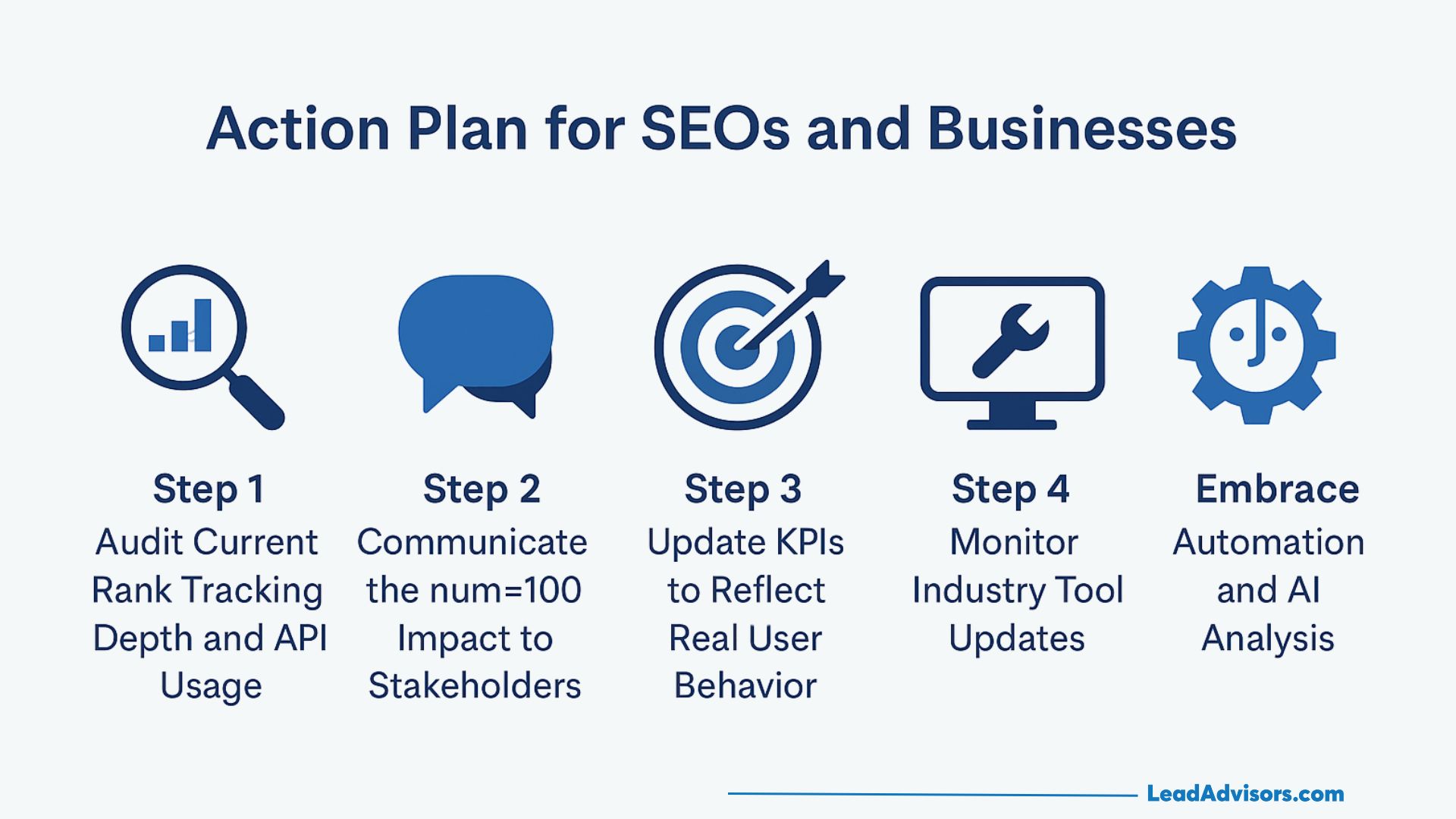
Adapting to Google’s num=100 update takes more than just switching tools – it requires refining your overall SEO strategy and ensuring your rank tracking process reflects real user behavior. The steps below outline how businesses and agencies can stay agile, maintain data accuracy, and extract actionable insights from modern rank tracking software.
Step 1: Audit Current Rank Tracking Depth and API Usage
Start by reviewing how your existing rank tracker gathers data. Check whether your tracking tool depends on the old &num=100 parameter or relies on bulk SERP queries. Assess your API usage, rank tracking features, and ranking data storage to ensure you can still access accurate search engine results. This audit helps identify gaps before they impact your SEO performance.
Step 2: Communicate the num=100 Impact to Stakeholders
Your clients or team may misinterpret sudden drops in visibility as lost rankings. It’s essential to clarify that these changes reflect shifts in data collection, not actual performance. Use GSC, analytics on Google, and rank tracking dashboards to visualize trends and provide context. Transparency keeps stakeholders confident in your long-term SEO efforts.
Step 3: Update KPIs to Reflect Real User Behavior
With rankings limited to 10 results per page, reporting needs to evolve. Focus KPIs on Page 1 visibility, click-through rate (CTR), and organic traffic, rather than total target keywords tracked. Use these key metrics to align ranking goals with conversions and revenue growth, ensuring data reflects meaningful engagement rather than vanity positions.
Step 4: Monitor Industry Tool Updates
Keep an eye on how top SEO tools respond. Platforms like AccuRanker, SE Ranking, and Advanced Web Ranking regularly roll out updates to improve position tracking and data efficiency. Some are experimenting with AI-powered predictions and improved rank tracking features that reduce API costs. Staying informed ensures your suite of SEO tools remains competitive and up to date.
Step 5: Embrace Automation and AI Analysis
The next generation of rank tracking platforms will leverage automation and AI to deliver smarter insights. Integrate AI-assisted rank analysis or Google Data Studio dashboards to visualize long-term trends and uncover emerging keyword opportunities. Automation helps you track rankings efficiently, streamline keyword monitoring, and uncover insights faster than manual reporting ever could.
In 2025, winning at rank tracking means focusing on relevance, accuracy, and adaptability. By auditing your tools, communicating clearly, and modernizing your SEO strategy, you’ll stay ahead in a data-limited world while maintaining control over your visibility and growth.
Frequently Asked Questions
Will Google bring back the &num=100 parameter?
How does the num=100 removal affect AI and data-driven SEO tools?
Can I still track rankings beyond the top 10 results?
How should I handle historical data comparisons after the update?
What metrics should replace deep rank tracking moving forward?
Conclusion: Beyond the Numbers
The num=100 update is less about losing data and more about achieving data maturity in SEO. For years, marketers and SEO professionals chased massive datasets and thousands of target keywords tracked to prove progress. But with Google’s tighter data limits, the focus has shifted from quantity to quality – from tracking every keyword position to understanding what truly drives visibility and conversions.
This change challenges the industry to evolve. Instead of trying to monitor every fluctuation across search engine results, SEOs now have the opportunity to refine how they measure success. The goal is no longer to report everything but to interpret insights that reveal growth, engagement, and impact.
The future of rank tracking isn’t about raw numbers – it’s about strategic visibility. As AI-driven search engines and SERP features continue to reshape how people find information, those who combine smart SEO tools, clear ranking data, and a focused SEO strategy will stand out. True success lies not in tracking every position, but in mastering how and where your brand is seen.








